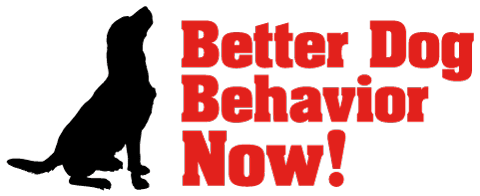“Why Use Positive Reinforcement in Your Dog Training?”
Positive reinforcement is a widely recognized and effective method in dog training. It involves rewarding desired behaviors to encourage their repetition, while avoiding punishment or aversive techniques. This approach focuses on creating a positive and enjoyable learning experience for both the dog and the trainer.
In dog training, positive reinforcement can take various forms, such as treats, praise, toys, or even playtime. By associating these rewards with desired behaviors like sitting, staying, or coming when called, dogs learn to understand what is expected of them and are motivated to repeat those behaviors.
I discovered many years ago that positive reinforcement strengthens the bond between the dog and its owner or trainer. Dogs learn to trust and respect their humans as they associate them with pleasant experiences and rewards. This creates a harmonious relationship based on mutual understanding and cooperation.
Moreover, positive reinforcement has been found to be more effective in achieving long-term behavior changes compared to punishment-based methods. Dogs trained using positive reinforcement are more likely to retain what they have learned and exhibit consistent good behavior even in different environments or challenging situations.
It’s important to note that positive reinforcement does not mean ignoring unwanted behaviors. Instead of punishing or scolding the dog for misbehaving, trainers focus on redirecting their attention towards appropriate behaviors and rewarding those instead. This helps dogs understand what is expected from them without causing fear or anxiety.
What I find is that dogs trained in ways that focus on aversives or corrections, many times are the “victims” of Classical Conditioning. Meaning the pain or discomfort of the correction (think leash pops, high levels of stimulation on an e-collar, yelling or spraying with water…yes some people still do thus stuff) begins to be associated with either the owner or whatever the dog is looking at when it gets the correction. So your dog can become scared or skittish around you, if you are delivering painful corrections for “misbehavior.” Or let’s say your dog is reactive to other dogs and you stop this behavior by correcting it…leash pops or e-collar stims. While the behavior may stop the aversive correction can also create a negative association. “I already didn’t like other dogs, now I really hate them because it hurts when I see them!”
This doesn’t mean I never do a correction. It’s just that when I do, which is extraordinarily rare, it’s because I don’t have another solution or strategy that teaches what I want instead. And if I do need to do a correction, it’s so mild that it really is more like a re-direction. Or the equivalent of gently tapping someone on the shoulder and saying, “hey why don’t you try this instead?”
Overall, incorporating positive reinforcement techniques into dog training can lead to happier dogs who are eager to learn and please their owners. It promotes a healthy learning environment where both parties can enjoy the process while building a strong bond based on trust and respect. Positive reinforcement gets the job done for me with the best long term result!
In dog training, positive reinforcement can take various forms, such as treats, praise, toys, or even playtime. By associating these rewards with desired behaviors like sitting, staying, or coming when called, dogs learn to understand what is expected of them and are motivated to repeat those behaviors.
I discovered many years ago that positive reinforcement strengthens the bond between the dog and its owner or trainer. Dogs learn to trust and respect their humans as they associate them with pleasant experiences and rewards. This creates a harmonious relationship based on mutual understanding and cooperation.
Moreover, positive reinforcement has been found to be more effective in achieving long-term behavior changes compared to punishment-based methods. Dogs trained using positive reinforcement are more likely to retain what they have learned and exhibit consistent good behavior even in different environments or challenging situations.
It’s important to note that positive reinforcement does not mean ignoring unwanted behaviors. Instead of punishing or scolding the dog for misbehaving, trainers focus on redirecting their attention towards appropriate behaviors and rewarding those instead. This helps dogs understand what is expected from them without causing fear or anxiety.
What I find is that dogs trained in ways that focus on aversives or corrections, many times are the “victims” of Classical Conditioning. Meaning the pain or discomfort of the correction (think leash pops, high levels of stimulation on an e-collar, yelling or spraying with water…yes some people still do thus stuff) begins to be associated with either the owner or whatever the dog is looking at when it gets the correction. So your dog can become scared or skittish around you, if you are delivering painful corrections for “misbehavior.” Or let’s say your dog is reactive to other dogs and you stop this behavior by correcting it…leash pops or e-collar stims. While the behavior may stop the aversive correction can also create a negative association. “I already didn’t like other dogs, now I really hate them because it hurts when I see them!”
This doesn’t mean I never do a correction. It’s just that when I do, which is extraordinarily rare, it’s because I don’t have another solution or strategy that teaches what I want instead. And if I do need to do a correction, it’s so mild that it really is more like a re-direction. Or the equivalent of gently tapping someone on the shoulder and saying, “hey why don’t you try this instead?”
Overall, incorporating positive reinforcement techniques into dog training can lead to happier dogs who are eager to learn and please their owners. It promotes a healthy learning environment where both parties can enjoy the process while building a strong bond based on trust and respect. Positive reinforcement gets the job done for me with the best long term result!

